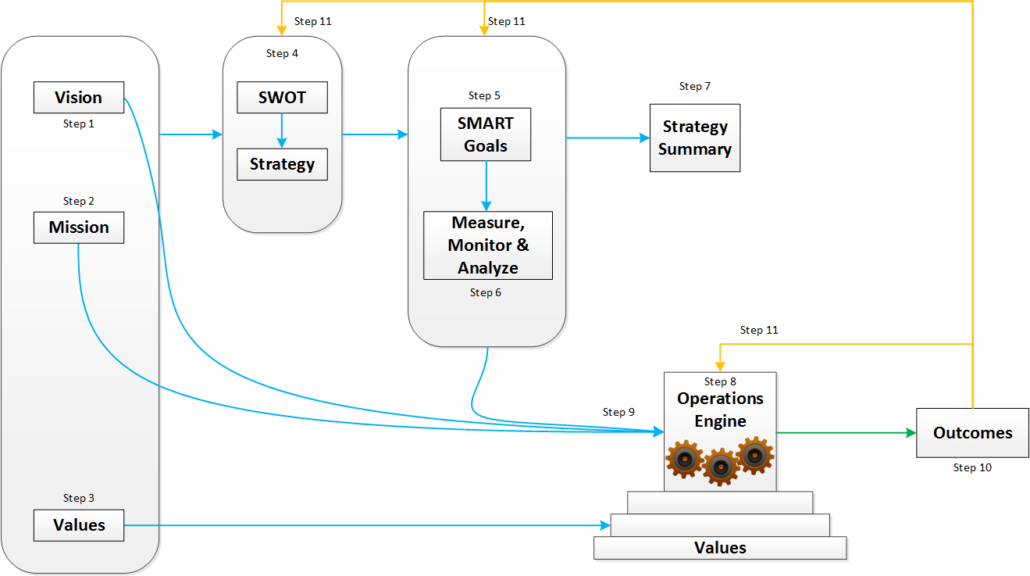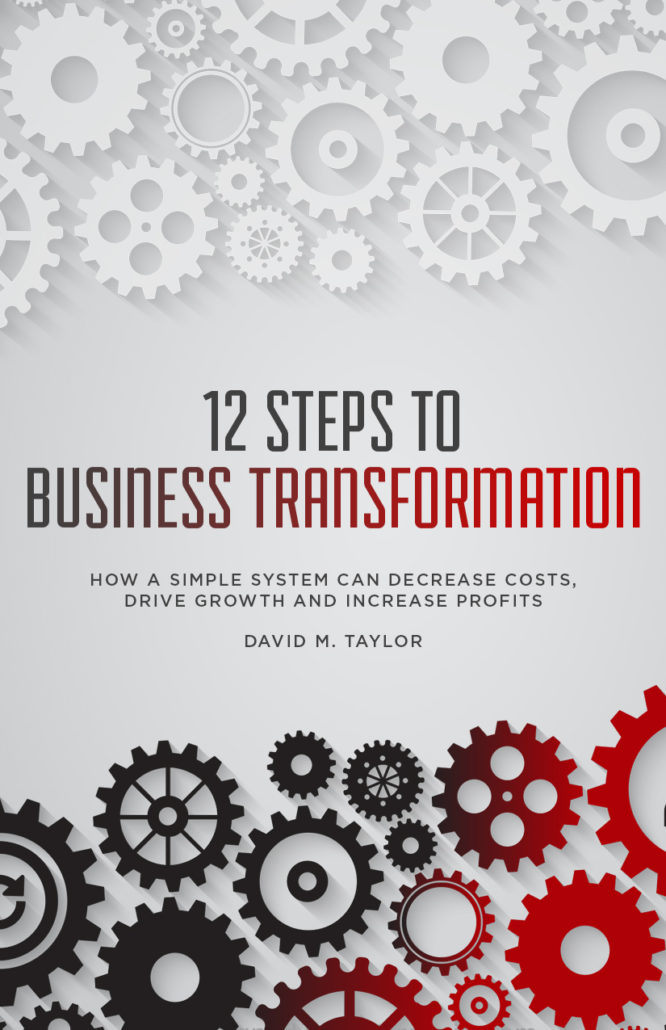Last week I introduced my Ebook 12 Steps to Business Transformation and I defined Vision, the first of the 12 transformational steps. This week we are going to talk about Mission.

Defining the Mission for your business is step 2 in my new free Ebook “12 Steps to Business Transformation.”
Where Vision is defined as a powerful picture of the future which creates an ideal and unique image of what your organization will become or achieve (the compelling reason WHY your business exists), the Mission defines exactly where you are going and what you are doing right now to attain the Vision.
Essentially, a Mission details WHAT the organization does every day to work towards achieving the Vision. A well defined and powerful mission results in engaged employees who can clearly see how they contribute to the organization’s success!
12 Steps to Business Transformation
12 Steps to Business Transformation is founded on a simple business model and describes the 12 steps required to implement and execute on the model. The whole model is summarized in the Thinking Business Blueprint shown below. And, as mentioned above, the second step in the Blueprint is to define your Mission.
I have written about what a Mission statement is, who is responsible for it, how you define it, how you communicate it and its importance in the following articles:
- What is Your Company’s Mission and Why Should You Care
- The Secret to Building a Successful Organization
Go ahead and spend some time and review these articles so that you clearly understand all aspects of the Mission statement.
Without a clear Mission for your business, you are left with just a visionary statement but no clear direction for your organization on what they need to do every day to achieve this Vision.
How Mission Statements Support the Vision and Drive Results
Consider the vision example from a previous post, “Make Poverty History”, and assume that we are an organization that is dedicated to this vision. What could our mission statement be? Well, there are an infinite number of ways that an organization could contribute to this vision so let us further assume we are an organization that creates, builds, and sells low cost, solar powered, battery backed up lights.
Vision: Make Poverty History
Mission: We create low cost, high quality solar powered lighting systems that light up the worlds of the underprivileged to drive education and industry.
This vision/mission combination provides a clear and powerful direction for the employees of this organization.
Now suppose we are an organization with the same vision but this time we raise funding for underprivileged children.
Vision: Make Poverty History
Mission: We match children in need of basic life essentials with donors willing to fund their formative years so they can grown up well nourished, clothed and educated.
You can see from these two examples how the vision statement is broad but the mission statement provides a clear focus on how the organization is working to achieve the vision.
In Summary
The vision statement provides the high level purpose of the organization while the mission statement describes exactly what the employees are working on day to day. Every individual in the organization should be able to clearly see how their activities contribute to the mission and ultimately to the vision. They need this direct line of sight to be engaged, productive and contributing members of the organization.
Go ahead and download the 12 Steps to Business Transformation Ebook for free. Spend some time this week reading it and then complete step two by defining the Mission for your business and begin communicating this throughout your organization.
“A mission cannot, and must not, be delegated to anyone except the people ultimately held accountable for it. In fact, a mission is the defining moment for a company’s leadership.” Jack Welch
Leave a comment on what your organization’s mission is in the comment area below.
Be sure to sign up at www.thinkingbusinessblog.com for weekly blog updates delivered to your inbox and feel free to forward this article to anyone that could benefit.
Download a free copy of my new Ebook: 12 Steps to Business Transformation



Please note: I reserve the right to delete comments that are offensive or off-topic.